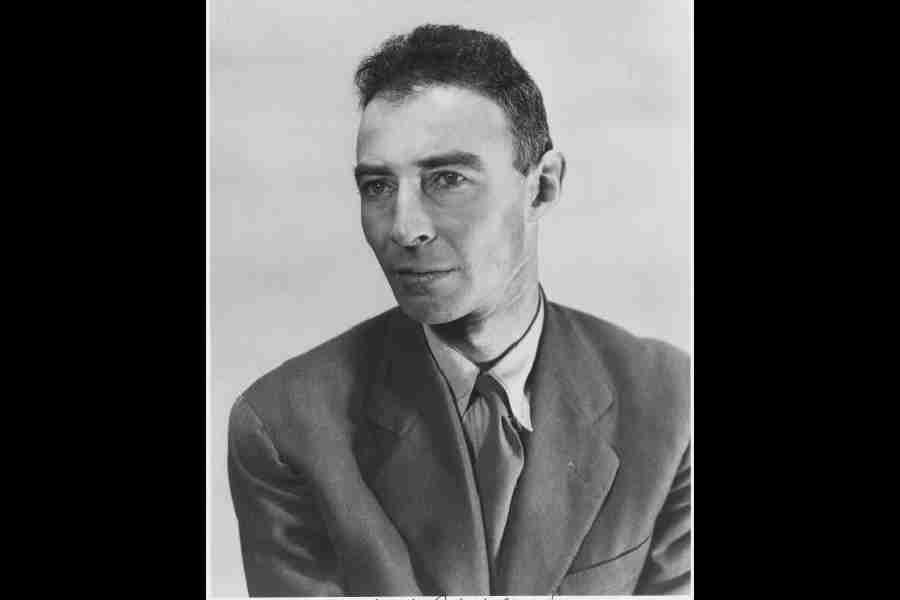With the biopic Oppenheimer, writer-director Christopher Nolan, known for brain twisting films like Interstellar and Inception, addresses an old childhood dread — one based not on science fiction but on real science, namely the threat of thermonuclear war and human annihilation.
The film follows the story of J. Robert Oppenheimer, the cerebral, charismatic and tortured physicist who was tapped to lead the Manhattan Project in Los Alamos, New Mexico, to build the atomic bomb during World War II.
The subsequent bombing of Hiroshima and Nagasaki ended the war against Japan in 1945 and Oppenheimer was hailed as a hero. But only a few years later, in 1954, his security clearance was revoked in an infamous hearing of advisers to the Atomic Energy Commission that declared him a security threat based on leftist ties at the University of California, Berkeley, US, and his opposition to building an even bigger bomb, the “Super” or hydrogen bomb espoused by his colleague Edward Teller.
That was the end of Oppenheimer’s career in government circles and of his ability to influence the future of atomic energy in the Cold War. As a result, he became a martyr to the scientific community. Many physicists, including Albert Einstein, were disappointed that the United States had dropped the bomb without warning on an enemy that was already defeated, while Oppenheimer hoped that the advent of the bomb would make war unthinkable and lead to international control on such weapons. Once the Russians had the bomb, however, that dream had no chance with hard-liners like the president at the time, Harry S. Truman, who called Oppenheimer a “crybaby”.
Over tea at his office in Los Angeles, US, Nolan discussed why he thought Oppenheimer was the most important person who ever lived, choosing between myths and the record, and how he came to make this movie. These are edited excerpts from our conversation. q. In the production notes you say, “Like it or not, J. Robert Oppenheimer is the most important person who ever lived.” Why?
In Hollywood, we’re not afraid of a little hype. Do I genuinely believe it? Absolutely. Because if my worst fears are true, he’ll be the man who destroyed the world. Who’s more important than that?... I think it’s very easy to make the case for Oppenheimer as the most important person who ever lived, because he is the person who facilitated and achieved atomic weapons and indeed the hydrogen bomb, because he let Teller work on it…
q. Why Oppenheimer now? I mean, this is a story I’ve grown up with my whole life as a child of the nuclear age.
There are certain stories that you want to kind of wait until you feel ready to tell them. (This) story is one that I’ve known about since I was a kid growing up in the shadow of nuclear weapons in the early ’80s in the United Kingdom. It was very much in pop culture… For me, it’s always seemed one of those stories that I don’t think it’s been told in any definitive movie sense. And yet it’s one of the most important and dramatic stories there are. So reading American Prometheus — it’s such a well-researched and well-told book — gave me confidence. That could be the basis, you know, of a film or a screenplay.
q. Truman called him a crybaby. Doesn’t seem very presidential, does it?
Given recent history it sounds very presidential to me. That was an enormous dramatic point in the film for me because it just made it so completely clear how badly Oppenheimer had misled himself.
q. That’s a good way of putting it. There are different accounts of that meeting, but these are things that Truman recollected.

A replica of the Los Alamos Project Main Gate, where the first atomic bombs were developed during World War II, stands at the edge of town in Los Alamos, New Mexico, U.S
I feel it’s only fair to present things the way he saw them. Because in that moment, you’re looking for a huge shift in perception about the reality of Oppenheimer’s situation. Those two men come into that room with completely different expectations about what that meeting is. And I think that was a massive moment of disillusion, a huge turning point — for Oppenheimer — in his approach to trying to deal with the consequences of what he’d been involved with.
q. Oppenheimer does come across in the movie as a tremendously tortured person, and sparks always seem to be going off in his head.
Well look, the film is my interpretation of his life. I wanted it to be a strong interpretation, a very personal interpretation. I didn’t want to make a documentary. As far as the adherence to the historical record, I think the film is much more accurate than people will imagine. A lot of the things that potentially seem like contrivances turn out to be true.
q. A quick question about the Trinity test, when Oppenheimer, Groves, the physicists and engineers set off the first nuclear bomb. How did you get that shot? Was some of it old footage from the test itself?
The way we approached (the) Trinity test was to forgo computer graphic imagery because I think computer graphics are inherently a bit safe, a bit anodyne, so I challenged my effects crew to come up with analogue, real-world types of imagery that we could use to pull this off because we knew the Trinity test had to be a showstopper in the film. Some of the things they came up with were extremely small and microscopic that play as bigger. Some were absolutely massive and required all kinds of complicated safety protocols and involved the actors in some very small version of what it must have been like to be there out in the desert at night in those bunkers waiting to detonate that device.
NYTNS











